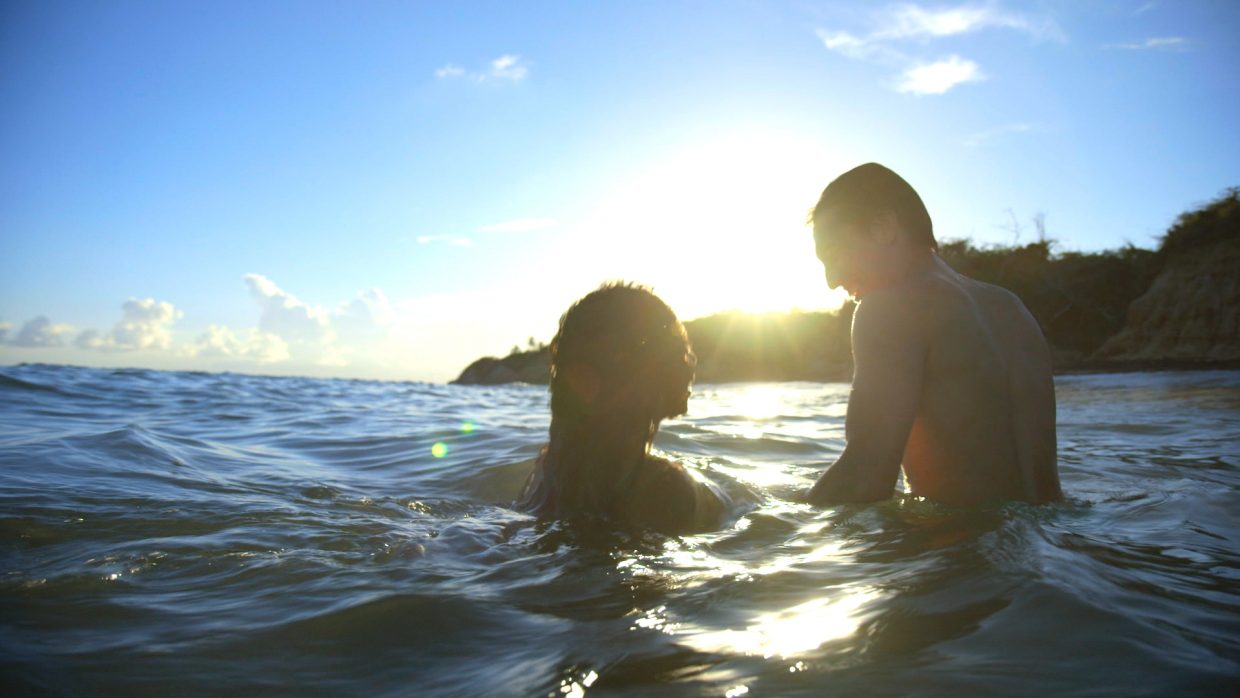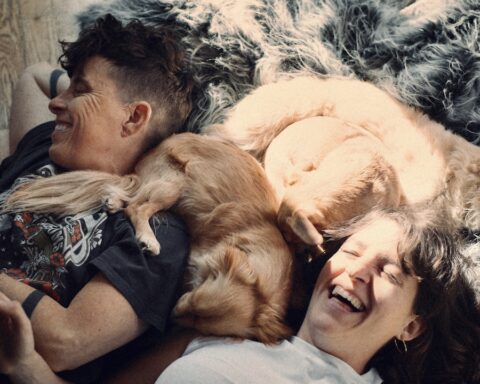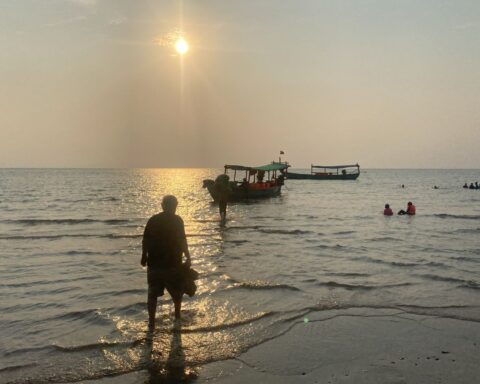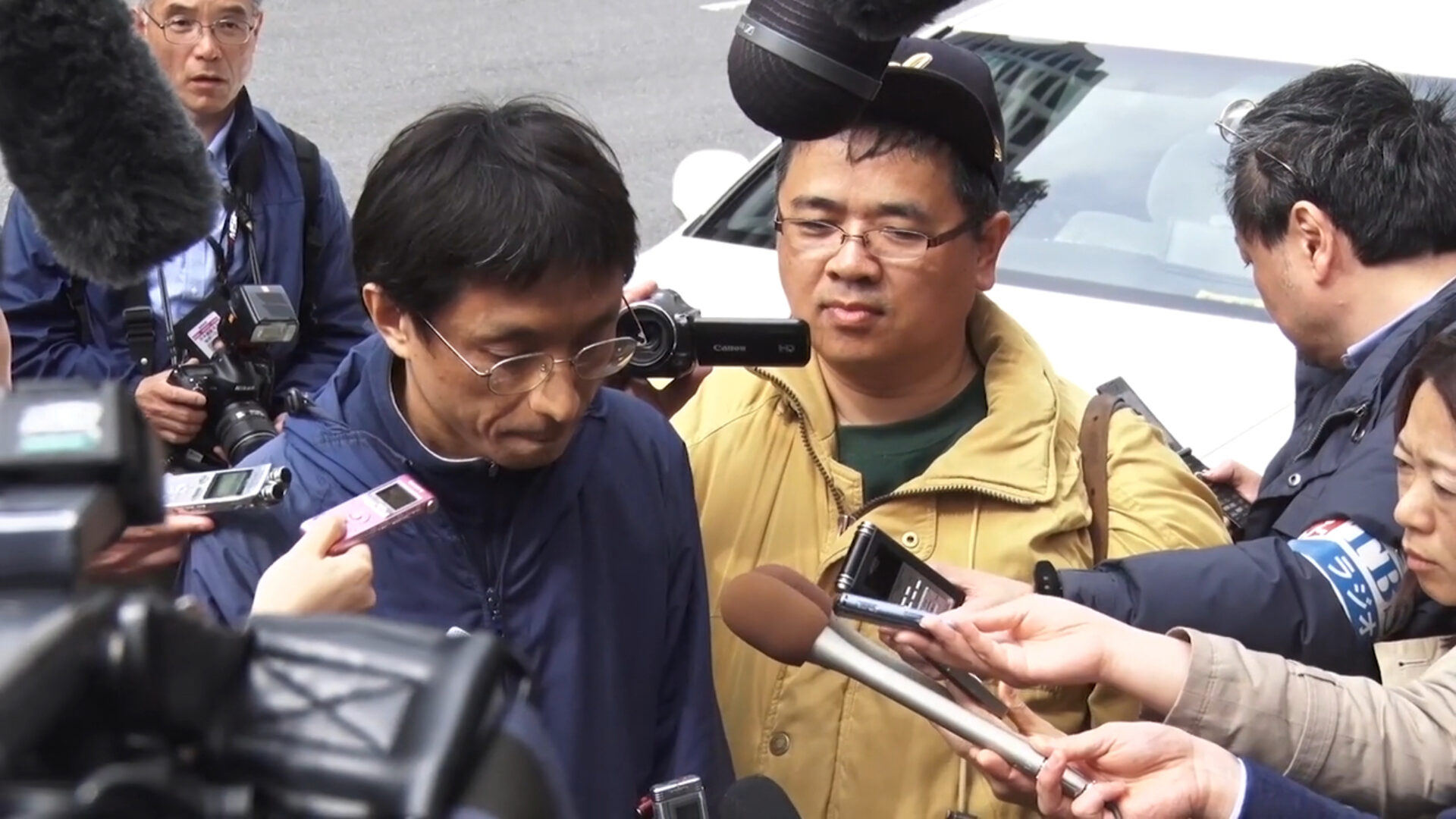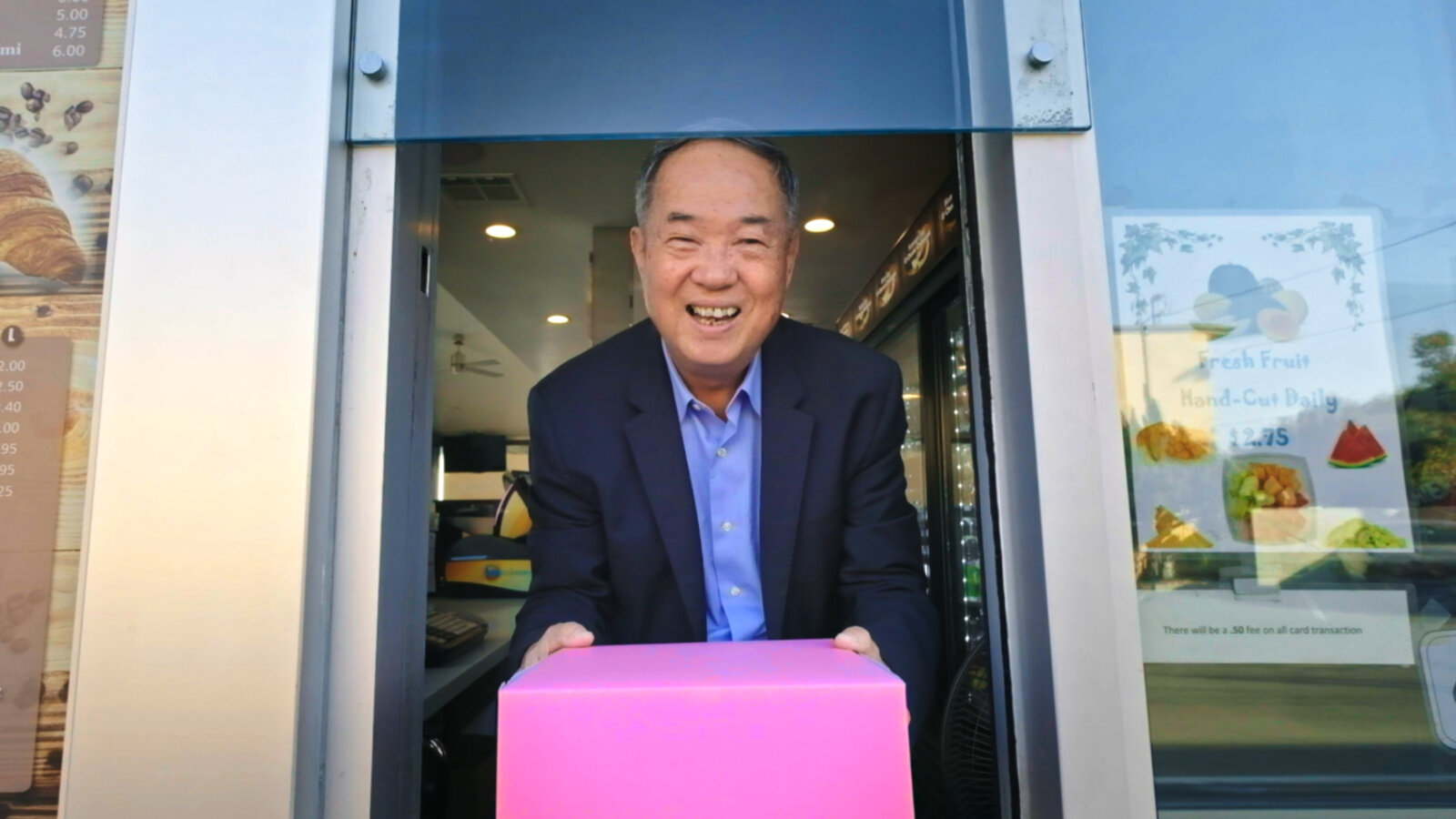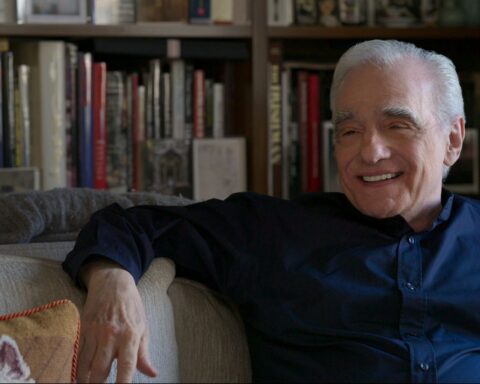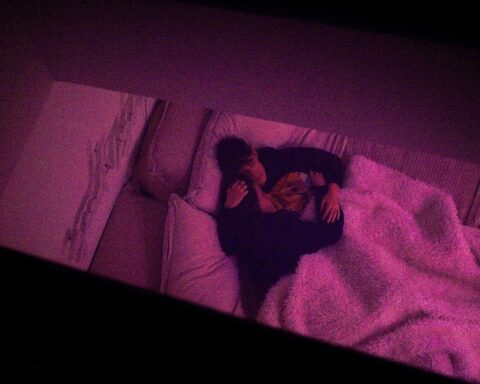In 2017, Puerto Rico was devastated by Hurricane Maria. However, as participants in Cecilia Aldarondo’s documentary Landfall were quick to point out, the real struggle came after. Visiting different parts of the island, from the large coastal cities to rural lands and the gated enclave of the wealthiest residents, a full portrait of Puerto Rico comes into focus. On one side, we have the long-standing residents organizing to rebuild and overthrow corrupt governments. On the other hand, private interests and opportunists sweep into the devastated country to sell snake oil and buy up cheap land.
Through the lens of disaster capitalism, Cecilia Aldarondo explores the predatory influences that descend on her homeland in Maria’s aftermath. However, more than a film about predation, Landfall is a portrait of resistance. At its heart, the film takes a holistic vision of a people coming together to find solutions outside of government and industry. They assemble, organize, and work towards a better future. Bookended by the enormous protests that ousted Governor Ricardo Rosselló, the film finds light, even as an entire people have been cast in darkness.
Cecilia Aldarondo spoke with POV Magazine by phone ahead of Landfall’s premiere at RIDM and DOC NYC.
https://vimeo.com/embed-redirect/457076644?embedded=true&source=video_title&owner=6222756
CA: Cecilia Aldarondo
POV: Justine Smith
This interview has been edited for brevity and clarity.
POV: Can you talk about the genesis of Landfall?
CA: I never intended to make this film, but nobody intends for a Category Five hurricane to hit their homeland. I grew up a Puerto Rican, but I was raised in the diaspora, meaning I was raised outside of Puerto Rico. When the hurricane hit, I had family still there– most importantly, my grandmother, who was confined to a wheelchair and needed 24-hour care. Like many millions of Puerto Ricans who live outside of Puerto Rico, I had to contend with this really frightening double vision.
On the one hand, I was bombarded with images of disaster, flattened trees and flooding waters and people lining up and waiting for aid. But on the other hand, I had no idea [what was happening]. We couldn’t get a hold of my grandmother, and I was very disconnected from my family. My grandmother ended up dying a few months after the hurricane. I count her as one of the many thousands of uncounted casualties of the hurricane. This film was a by-product of my impotence, my grief, and my rage. I was very aware that the way the mainstream media talked about the hurricane was not remotely doing justice to the complexity of this incredible place.
I had already been very concerned about the economic crisis Puerto Rico had been in for many years. This $72 billion illegal debt was crippling the economy before Maria, and almost nobody talked about it. A few days after the hurricane, I came across an article in the Washington Post written by a Puerto Rican academic, Yarimar Bonilla, Why would anyone want a hurricane? Because someone will get rich. Frankly, this was an angle that was not being explored in most media outlets—everything was just a pornography of disaster images. Then the media moved on. Through all of this personal grief, it was also a sense that Puerto Rico was not being done justice in terms of media representation that I felt that I could intervene.
POV: Landfall features a wide range of subjects and experiences. How did you go about collecting participants for the film?
CA: Documentaries are not usually made alone. This film is rooted in a deep collaboration between me, a diaspora Puerto Rican, and a Puerto Rico based [collaborator] named Lale Namerrow Pastor, who is a teacher and activist there. I was very aware that I had many blind spots, and there were many potential pitfalls. Given that this is a film about colonialism, the last thing I wanted to do was parachute in with my camera. Lale was really instrumental in working with me to identify people to film and think through the ethics of how we were making this film, particularly with people who are traumatized.
I wanted to have a holistic approach and a cross-section of people from different areas of Puerto Rican life. We have people from rural areas, from coastal areas, from urban life, and from a cross-section of class backgrounds, racial backgrounds, gender, ages, etc. First and foremost, we wanted the film to be a portrait of a people. If there’s a main character in this film, it is Puerto Rico itself. We relied on a combination of things. One was knowing the kinds of stories we were looking for, but not necessarily knowing who [would tell them]. One of the most important principles we adopted from the beginning was insisting that people are experts in their own lives.
POV: Can you tell me more about the decision to avoid conventional talking heads experts, like politicians?
CA: When you live in crisis day to day, you are an expert. It was important to celebrate and highlight the knowledge and the expertise, and the political sophistication of Puerto Ricans, all of them. We really wanted to find dynamic speakers who could really show us how crisis manifests in everyday life in surprising and sometimes even beautiful ways. We have antagonists because this is a film about opportunism in the wake of disaster. It’s also a film about people taking advantage of other people.
It was important to profile not only people trying to rebuild but also people who are coming in to effectively take advantage of a vulnerable situation. I was aware of the crypto[currency] evangelist figure of Brock Pierce and the entourage of people who had descended on Puerto Rico. He’s one of many cases [in which] all these guys want is attention. We were very keen to not give them the last word and make sure that they didn’t take over the story because that’s often what happens with crazy powerful people; they make it all about them.
We wanted to make a film that would decenter them from this portrait of Puerto Rican life. They are who they are, and they are as ridiculous as they come across, but they’re not the center. One of the things that I learned making this film is that sometimes we just focus on the awful people who are causing problems when things are really awful. It became important to create an experience that would look away from all that awfulness and create a space for something other than that.
POV: The film centres on communal discussions. Can you talk about how these scenes function with the film?
CA: We wanted to highlight and celebrate the community-based nature of recovery that is so powerfully articulated in contemporary Puerto Rico. It was about being open to the world. For example, there’s a scene in the film where a group of young people sitting in a plaza at night are discussing the dismantling of the university system in the service of paying the illegal debt. We didn’t plan that. We were shooting something else, and my DP was wandering around that plaza getting some B-roll and saw these young people talking. He asked them if he could film their conversation. This is one of the things that is incredibly beautiful about Puerto Rican culture. Collectivity, it’s sort of an anti-individualist culture in many ways. We wanted to celebrate that and make a film portraying a whole people, rather than a bunch of isolated individuals.
POV: Can you talk a little bit about the editing process, especially since you’re interweaving so many different threads and experiences to create a full portrait of Puerto Rico after the Hurricane?
CA: I had the great privilege of working with a Canadian editor named Terra Jean Long, who is in her own right, an incredible experimental filmmaker. At the time, she was based in Toronto, and I was based in New York. We had a long-distance collaboration, and we would sometimes get together. It was an incredible experience in part because Terra is a highly sensitive human being and a very patient editor. When we first met and talked about working together, she was reluctant to work on the film because she isn’t Puerto Rican. She had never been there, and when she started editing the film, she didn’t speak a word of Spanish. She was rightfully careful about saying, am I the right person to edit this film?
Even though I barely knew her, I had this sense that she had the formal capabilities, the intellectual sophistication, and had a deep sense of ethics. I said, “I think you are the person to make this film and to edit this with me.” It was very hard, like a Rubik’s cube where you move one thing and then everything falls apart, and then you have to completely re-edit the entire thing. This is not a film with a definitive beginning, middle and end. It was constructed based on arguments that surfaced through the footage. We knew that there were certain things that we wanted the film to be about.
We wanted it to be about the long legacy of colonialism and the pre-existing conditions of crisis. We knew we wanted this holistic approach, and there are many things that we cared about, but the structure was the hardest thing to figure out. We did not expect the massive, historic protests that resulted in the ouster of the governor last summer. They end up bookending the film. We thought we were almost done editing when those protests broke out. They gave us our ultimate structure and something to build towards. The film didn’t have much hope before the protest broke out. They really helped us ground this difficult time in something that was also beautiful, animated and quite rich.
POV: Landfall and your earlier film, Picket Line [her 2017 short documentary about the 105-day strike Momentive chemical plant that took place right before the 2016 election], seem to be a direct response to the 24/7 news cycle. Can you talk about the ways documentaries counteract the frenzy of the current news cycle?
CA: We’re conditioned not to take time, and I think this is getting harder and harder given how distracted we all are. The rise of social media and digital media has only encouraged us to be less patient. I’m really moved by political filmmakers who are also patient filmmakers. I think someone like Patricio Guzmán, the great chronicler of Chilean history. We have to ask ourselves what we miss out on in terms of our political consciousness if we don’t allow for meditation. With something like Picket Line, it was actually a tough project because it was made in the wake of the election.
It is meaningful to me because it was a portrait of something happening in my community, where I was living at the time. I learned a lot about what else I wanted to do as a filmmaker. I don’t know that I would make a film so quickly again Landfall is a project about very urgent social issues, but it took almost three years to make it. We can get caught up in thinking, “I have to make a [film] that’s going to be broadcast tomorrow and, otherwise, it’s not going to matter.” The thing about slow political filmmaking is that it allows for more indelible insights to emerge; to go beyond the news that’s giving you the whiplash of today, [but] you’ll probably forget about tomorrow. More patient forms of political filmmaking teach us more in the long run.
Landfall premiered at DOC NYC and screens at RIDM beginning Nov. 19




